Celonis SAML integration
Multi-Factor Authentication (MFA) is an extra layer of security used when logging into websites or apps. Individuals are authenticated through more than one required security and validation procedure that only they know or have access to.
Arculix by SecureAuth offers a simple method for adding single sign-on (SSO) MFA to Celonis through its SAML solution.
Prerequisites
Configured Arculix instance and user account with administrative privileges for Arculix.
Configured Arculix LDAP Agent.
For more information, see the Arculix LDAP Agent deployment guide.
User account with administrative privileges for Celonis.
Celonis configuration
In this section, you'll configure Celonis as a service provider (SP).
Download the SAML metadata and certificate for your organization from Arculix.
Metadata download:
https://sso.acceptto.com/<myorganization>/saml/download/metadataView metadata:
https://sso.acceptto.com/<myorganization>/saml/metadataCertificate download:
https://sso.acceptto.com/<myorganization>/saml/download/certLog in to your Celonis tenant with an administrative account.
From the left navigation, click the Admin & Settings icon and select Single-SignOn.
In the SAML section, click Configure.
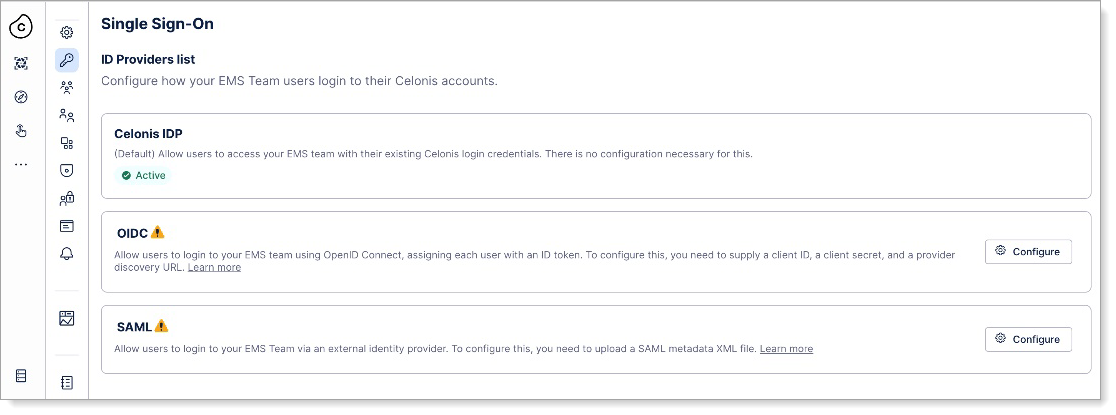
Select the GENERAL SETTINGS tab and enter a Name for this configuration.
For example, Arculix.
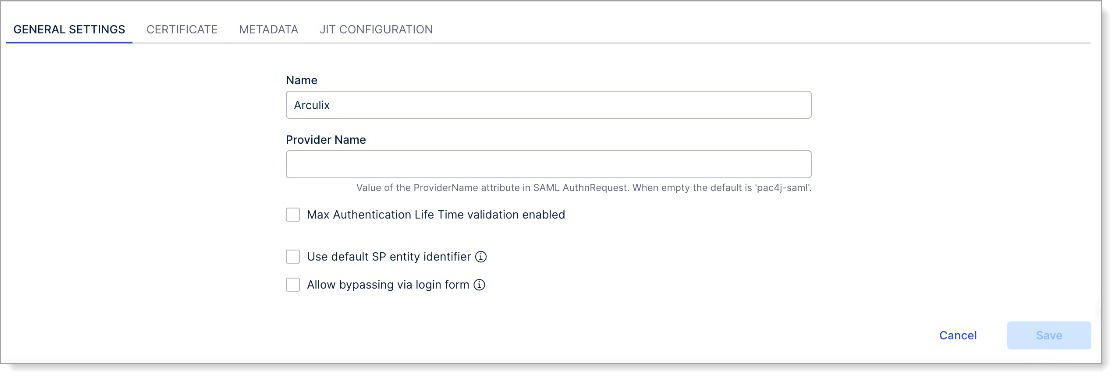
Select the METADATA tab and do the following:
Click Select File and upload the metadata that you just downloaded from Arculix.
Click Download SP Metadata and save this information for the Arculix side of the configuration.
Click Save.
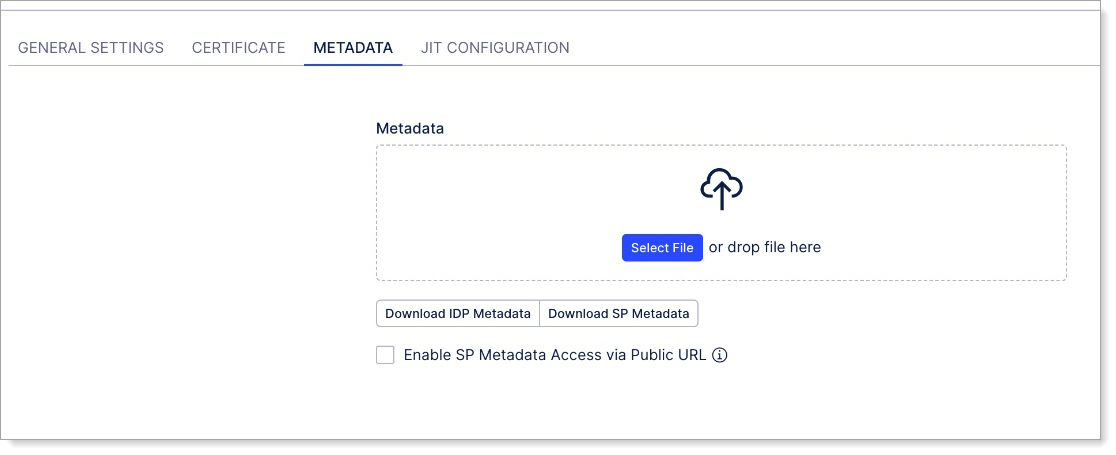
On the ID Providers List page, in the SAML section, click Activate.
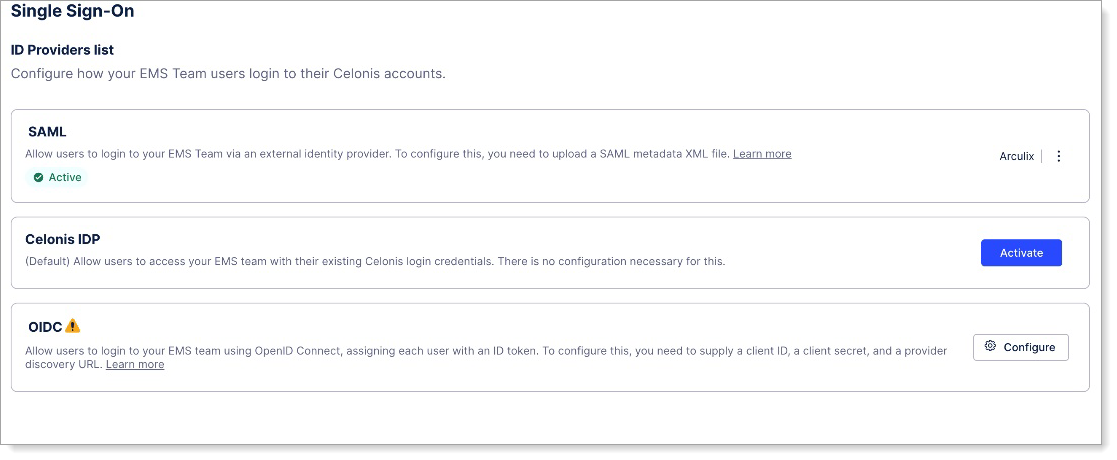
Arculix SAML configuration as an Identity Provider (IdP)
In this section, you'll add an application for Celonis and set the SAML configuration settings. This will be the Identity Provider (IdP) side of the configuration.
Log in to Arculix with an administrative account and go to Applications.
Click Create New Application.
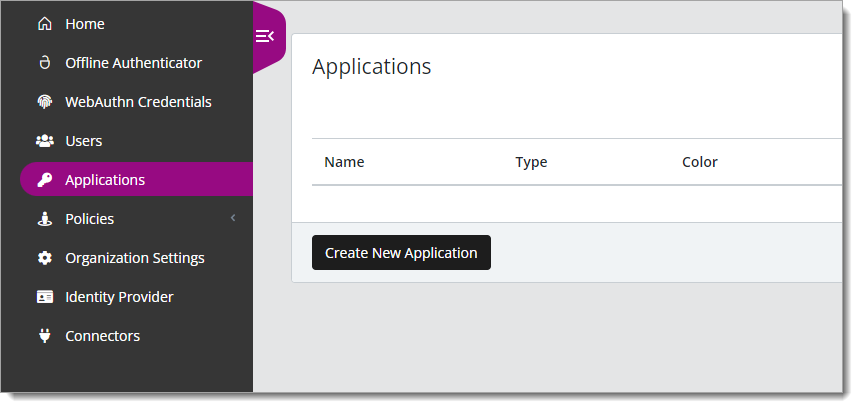
In the New Application form, on the General tab, set the following configurations:
Name
Set the name of the application. This is the name to display for push notifications, in the Admin panel, Application portal, and audit logs.
For example, Celonis.
Type
Set to SAML Service Provider.
Out of Band Methods
Select the allowed methods end users can choose to approve MFA requests.
For example, Arculix Mobile app (push notifications), SMS, or Security Key.
Message for MFA Requests
Optional. Type a message displayed to end users when sending an MFA request via push notification, SMS, or email.

Select the SAML Service Provider Configuration tab, and set the following configurations:
Issuer or Entity ID
Enter the SAML entity ID provided by Celonis, without the https at the beginning.
For example,
testcompany.eu-1.celonis.cloudLog in URL
Enter the SAML entity ID provided by Celonis.
For example,
https://testcompany.eu1.celonis.cloud/ui/loginNameID Format
Set to Email Address.
Name Identifier
Set to Email.
ACS URL
Enter the SAML consumer URL provided by Celonis
For example,
https://testcompany.eu-1.celonis.cloud/api/auth-handler/saml/callback?client_name=SAML2ClientAlgorithm
Set to RSA-SHA256.
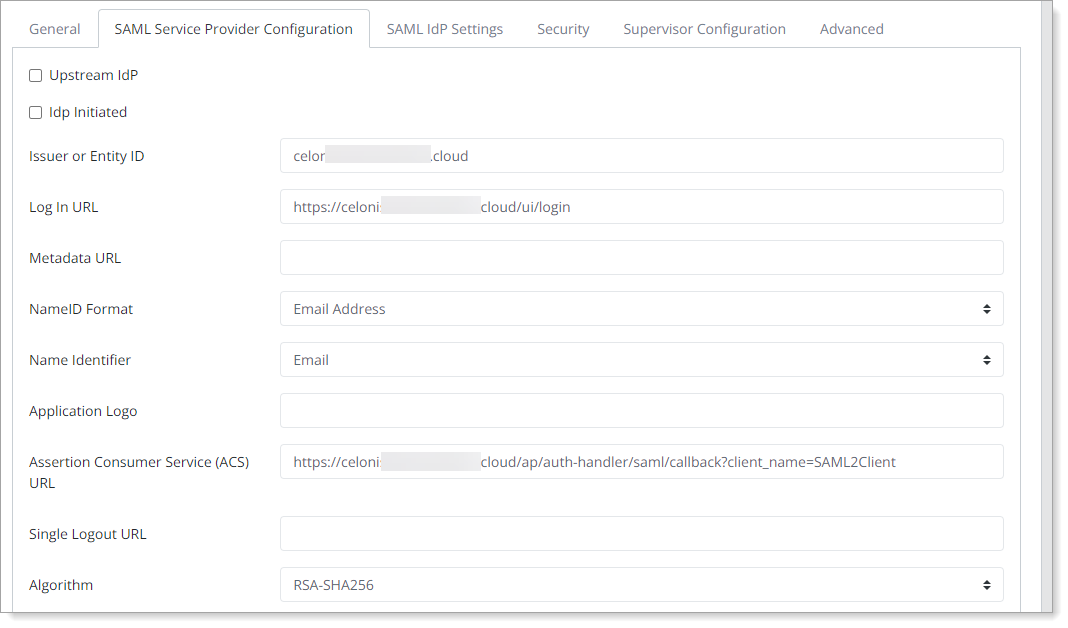
In the Asserted Attributes section, set the following values:
Friendly Name
Name
Value
Name Format
EmailAddress
email
mail
unspecified

Save your changes.
Test your application integration
Go to your Celonis tenant.
You will be redirected to the Arculix SSO page.
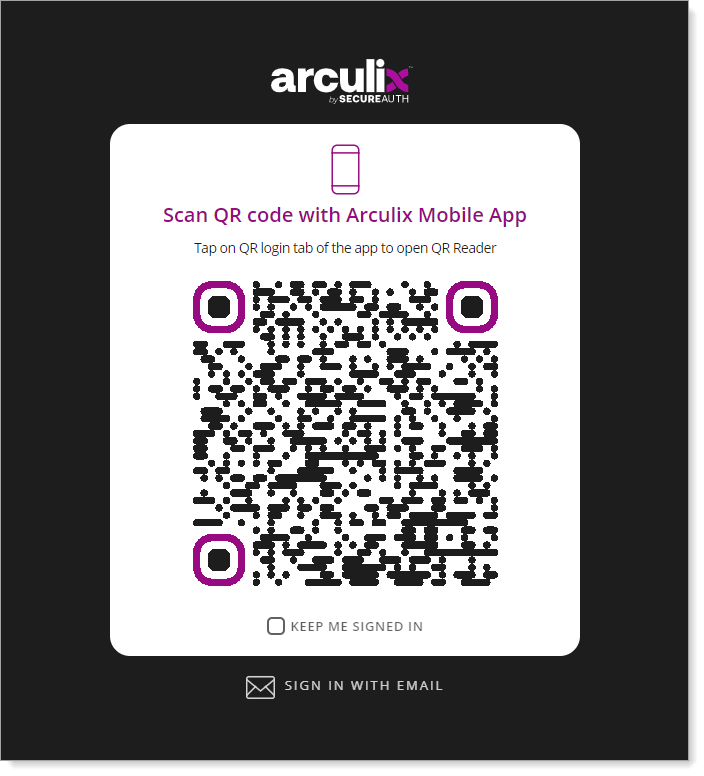
After successful authentication, select your preferred MFA method to approve access to the Celonis application.
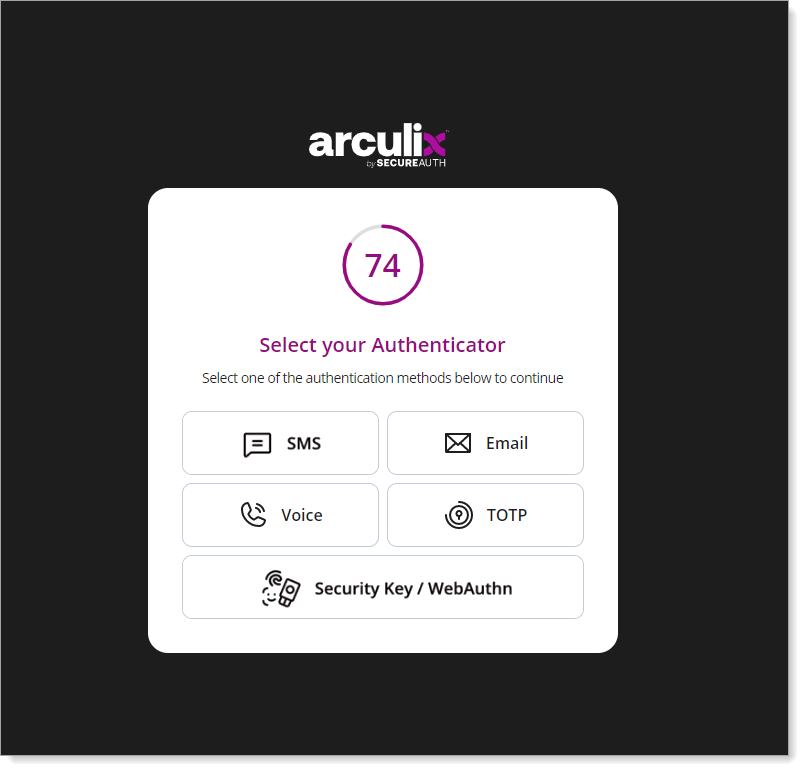
Finally, you will be redirected and logged in to Celonis.
Support
If you have questions or need assistance, contact SecureAuth Support.
Sales
Want to learn more about our MFA solutions? Contact our Professional Services for a demo today.
Disclaimer
All product names, trademarks, and registered trademarks are the property of their respective owners.
All company, product, and service names used in this document are for identification purposes only. The use of these names, trademarks, and brands do not constitute an endorsement by the SecureAuth Corporation.
Microsoft and Active Directory are either registered trademarks or trademarks of Microsoft and/or one or more of its subsidiaries in the United States and/or other countries.